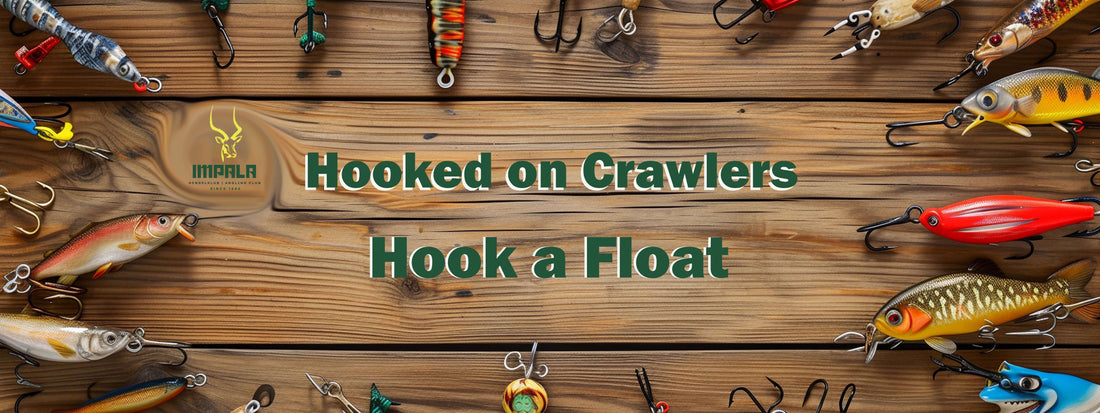Impala Angling Club, is pleased to launch a new series: Hooked on Crawlers! This series aims to equip anglers of all levels with the knowledge and techniques to maximise their fishing success.
In our second installment, we’ll guide you the proper technique for hooking both soft and hard floaties. Floaties are a popular bait choice for many anglers, especially when targeting species that prefer a more subtle presentation. However, the technique of hooking floaties can significantly impact your success rate.
Hard Floaties: A Classic Choice
Hard floaties, often made from durable materials like plastic or foam, offer a reliable and long-lasting option for anglers.
When hooking a hard floatie, follow these steps:
Hook Placement: Choosing a bigger floatie and then inserting the hook into the top quarter of the longest side of the floatie.
Hook Threading: Thread the hook through the floatie, ensuring it passes the curve of the hook.
By following this technique, the long side of the floatie will act as a buoyant lift, raising the hook point and increasing the chances of a successful hookset when a fish strikes.
Soft Floaties: A Delicate Touch
Soft floaties, often made from materials like sponge or foam, can be more delicate than their hard counterparts. You would hook a soft floatie using the same technique as the hard floatie:
Hook Placement: Insert the hook into the top quarter of the smaller soft floatie.
Hook Threading: Thread the hook through the floatie, ensuring it passes the curve of the hook.
To maximise the effectiveness of soft floaties, consider using two soft floaties in a Double Floatie rig set up.
Double Floatie Rig
Floatie Stacking: Thread a smaller floatie onto the hook first, followed by a larger floatie.
Hook Threading: Ensure that both floaties are threaded past the curve of the hook.
Hook Exposure: Ensure that the hook point is exposed above the larger floatie.
This double floatie rig offers several advantages:
- Increased Buoyancy: The larger floatie provides additional lift, ensuring the hook point remains exposed.
- Enhanced Visibility: The contrasting colours of the two floaties can attract fish from a greater distance.
- Improved Hooking Ability: The stacked floaties create a more compact and buoyant presentation, making it easier to hook fish.
Additional Tips for Using Floaties:
Floatie Selection: Choose floaties that are appropriate for the target species and water conditions. Consider factors such as water clarity, current speed, and fish behaviour.
Hook Size: Select a hook size that is proportional to the size of the floatie. A hook that is too large can hinder the floatie's natural movement, while a hook that is too small may not secure the fish properly.
Baiting Strategies: Consider adding a small piece of bait, such as a worm or a piece of bread, to the hook to further entice fish.
By mastering the art of hooking floaties, you can improve your angling skills and increase your chances of landing more fish. Remember, practice and experimentation are key to finding the best techniques for your specific fishing conditions and target species.
Impala Angling Club has been at the forefront of angling since the 1960’s. This family-orientated club is passionate about growing the sport of angling while uplifting the local youth by giving them opportunities to participate in the sport. Impala Angling Club consists of various current and former provincial and national anglers within the club. The club offers a gateway to representing your province or the country.

